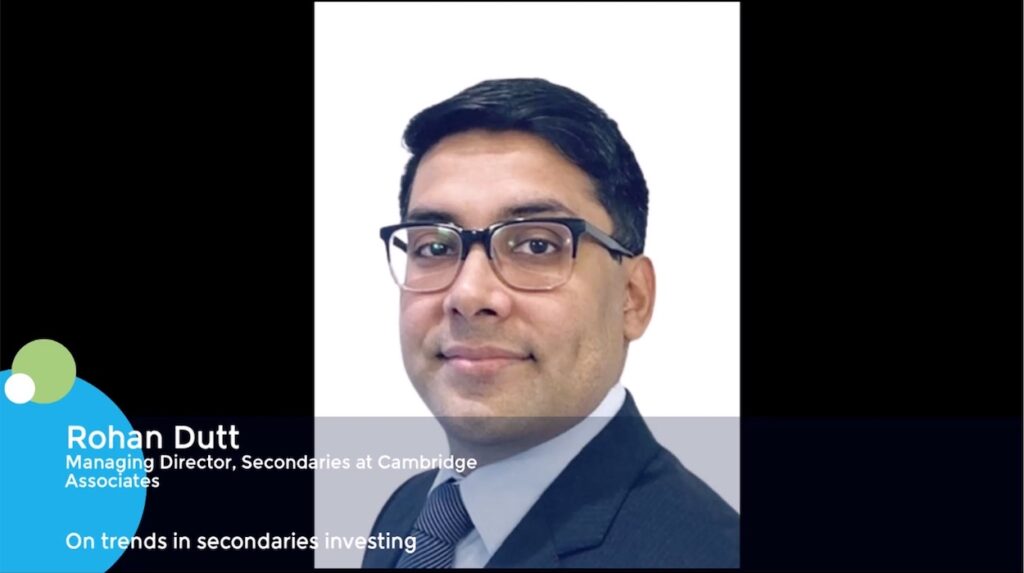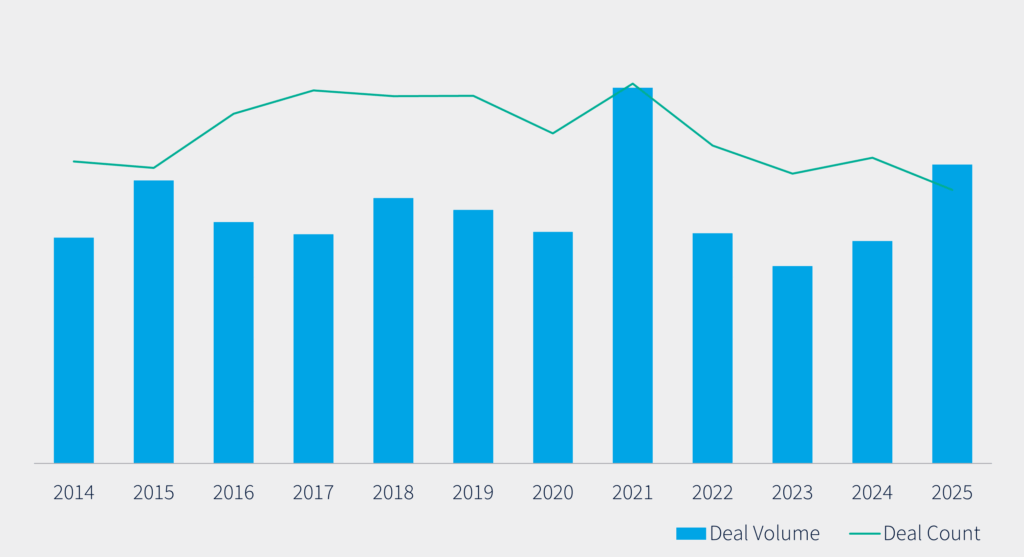Angus Whiteley, CEO of Stafford Capital Partners, on trends in secondaries in real assets
In the latest episode of ION Influencers Fireside Chats, host Giovanna Amodeo sat down with Angus Whiteley, CEO of Stafford Capital Partners, to discuss emerging trends and investment opportunities in secondaries within real assets. The conversation provided rich insights into the evolving dynamics of private markets and the growing relevance of secondaries as a strategic investment tool.
Key Topics Discussed:
1. Stafford Capital’s Origins and Investment Focus
-
Founded in 2000, managing $8.5B in AUM across infrastructure, timberland, and private equity.
-
Focus on innovation in asset access and a strong sustainability theme across strategies.
2. Why Secondaries Are Gaining Momentum
-
The private markets are expanding rapidly, with over $13 trillion in capital and growing.
-
As allocations increase, liquidity becomes a core concern for institutional investors.
-
Secondaries offer a compelling supply-demand dynamic, especially amid denominator effects and DPI slowdowns.
3. Correlation Between Exit Markets and Secondaries
-
Strong correlation exists due to institutional liquidity demands and slow decision-making cycles.
-
This link may weaken as secondaries markets mature and innovate.
4. Growth of Real Assets in Secondaries
-
Historically dominated by private equity, secondaries are now expanding into private credit and real assets (e.g., infrastructure and timberland).
-
Long fund durations in real assets make them ideal for secondary liquidity solutions.
-
Stafford was a pioneer in timberland and infrastructure secondaries, with roots going back 20 years.
5. Barriers to Entry and Competitive Edge
-
Asset-specific knowledge (e.g., timber) creates high entry barriers for new players.
-
Proprietary expertise and early-mover advantage give Stafford a defensible position.
6. Deal Sourcing & Proprietary Opportunities
-
Stafford maintains a strong proprietary deal flow: 87% of its Fund IV deals were proprietary.
-
While infrastructure is becoming more intermediated, Stafford leverages long-standing GP and LP relationships to secure off-market transactions.
7. Due Diligence & Investment Strategy
-
Accelerated deal timelines demand sharper due diligence.
-
Stafford uses a proprietary blueprint model to map and target ideal exposure across its portfolio.
-
Focused underwriting with asset-level insight ensures precision in pricing and negotiation.
8. Rise of GP-led Secondaries
-
GP-led transactions are growing—$10B in 2024, projected to double in 2025.
-
Evolving from fee-extension tools to vehicles for holding high-performing assets longer.
-
Viewed as a permanent fixture in the secondaries ecosystem.
9. Sustainability as a Strategic Imperative
-
Sustainability and decarbonization remain critical investment filters.
-
Stafford contributes to industry efforts (e.g., with IIGCC) on physical climate risk in infrastructure.
-
Long-term asset holders must consider climate resilience, chronic and acute risks, and policy evolution.
10. Macroeconomic and Geopolitical Concerns
-
Whiteley expressed concern over global instability, heightened political engagement, and macro volatility.
-
These trends influence capital deployment decisions and risk frameworks across strategies.
Key Takeaways for Investors:
-
Secondaries are no longer niche—they are essential to navigating liquidity needs in a growing private market landscape.
-
Real assets offer long-duration exposure, stable yield, and now, accessible liquidity through secondaries.
-
Sustainability and asset-specific expertise are defining success in emerging secondary markets.
-
Institutional investors should monitor GP-led growth as it reshapes exit strategies and portfolio construction.
Key timestamps:
00:07 Introduction to ION Influencers Fireside Chats
02:21 Exploring the Secondary Market
04:42 Liquidity Needs in Private Markets
08:04 Opportunities in Real Assets
10:07 Barriers for New Entrants in Secondary Markets
12:41 Evolution of Deal Sourcing
17:27 Growth of GP-Led Opportunities
19:16 Importance of Sustainability in Investments
23:09 Navigating Macroeconomic Instability
25:07 The Impact of Geopolitics on Investment Strategies
26:13 Long-term Concerns vs. Short-term Instability











